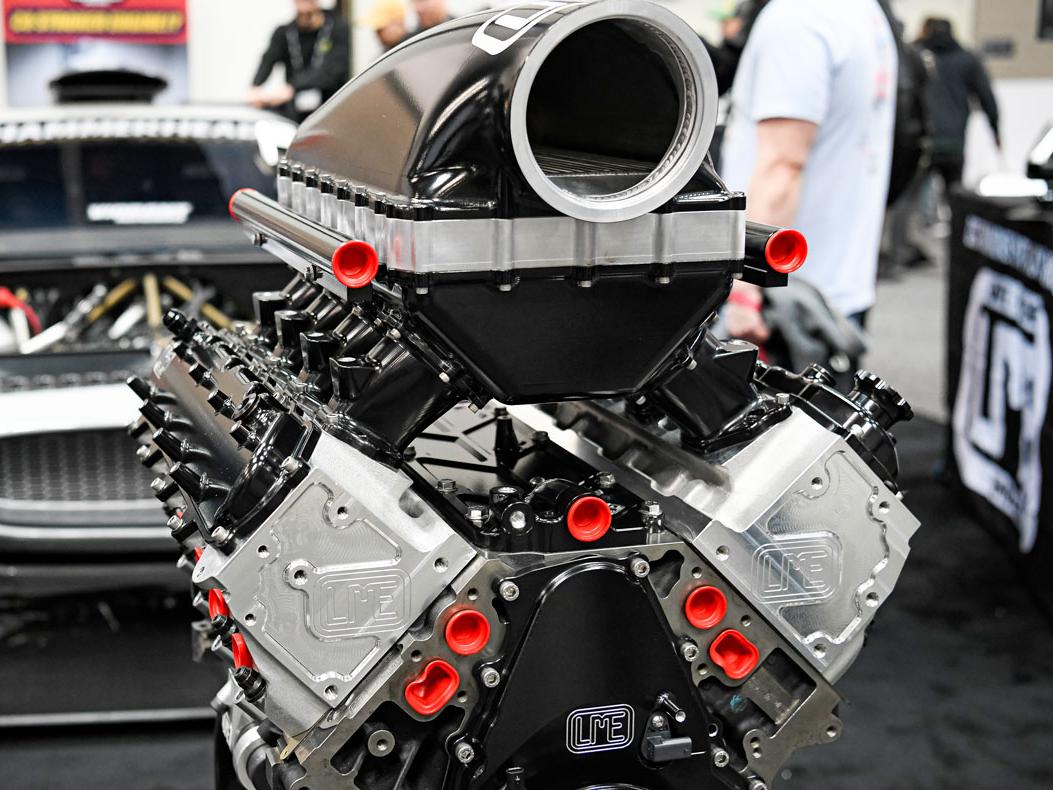Turning Pipe Dreams Into Reality
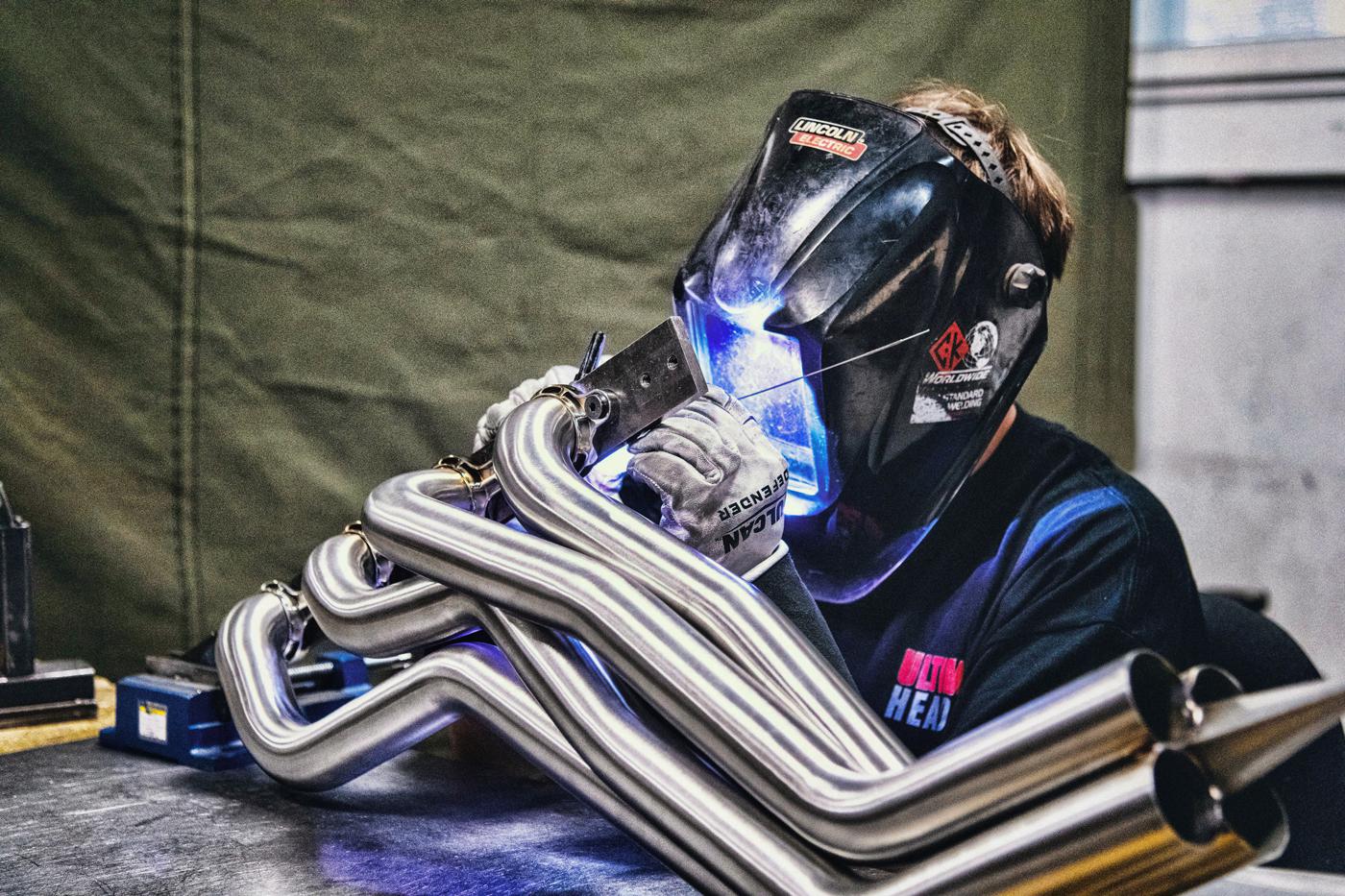
New developments are putting custom exhaust fabrication within reach of more in the racing community, with better results and faster build times.
Building headers can be like getting a root canal. It’s one of those things you know you need to do, and you’ll feel better when it’s done. But getting through it can be a journey of patience, bravery and an impressive array of swear words.
Yet custom exhaust work is increasingly becoming a necessity, as potential car-and-engine combinations reach staggering numbers. “Engine swaps are becoming much more popular,” noted Steve Zimmerman at Stainless Headers Mfg., Lake City, Minnesota. “There’s more stuff in junkyards and more leftover frames sitting around. So engines are ending up in places they’re not supposed to be. That makes finding an off-the-shelf header that much more difficult.”
For the uninitiated, custom headers aren’t what they perhaps appear to be. Although the tubes in a well-built custom header flow smoothly and evenly like bent pieces of tubing, they’re actually in most cases formed from short, individual sections of tubing, welded together and then ground smooth.
It’s not easy to do. But this age-old method of building custom headers is still the best way to come up with the complex bends typically required to fit headers in an engine compartment and keep the length of the tubes close to equal—an important element for optimizing the power and tuneability of an engine.
In other words, custom exhaust fabrication is more of an art than a science. But now there are new components, kits and tools to make the job easier. To learn more about these developments, we reached out to some of the leading suppliers of header components. They gave us valuable insight that can take much of the exhaustion out of exhaust fabrication.
Skilled Labor
Many of the suppliers we spoke to have moved away from building custom exhaust systems and instead focus mainly on selling components. “Custom fabrication work is very time consuming,” noted Vince Roman of Burns Stainless, Costa Mesa, California. “It can be pretty expensive. The other part is, since we need to have the car, it has to be somebody who is close by or willing to ship us their car.”
In most cases, then, racers seeking custom headers are left with two choices: Find a capable local fabricator or build it themselves.
None of our sources said outright that the process is beyond the abilities of DIY builders in a home garage. Nonetheless, some underscored the high level of skill the job requires. “Most of the customers that buy our individual components have made headers before,” explained Jim Browning of Ultimate Headers, Berea, Ohio. “I equate it to watching home improvement shows on TV. They make it look easy, but those are professionals doing it day in and day out.”
“It’s not for the mild-mannered weekend warrior in his garage,” added Roman.
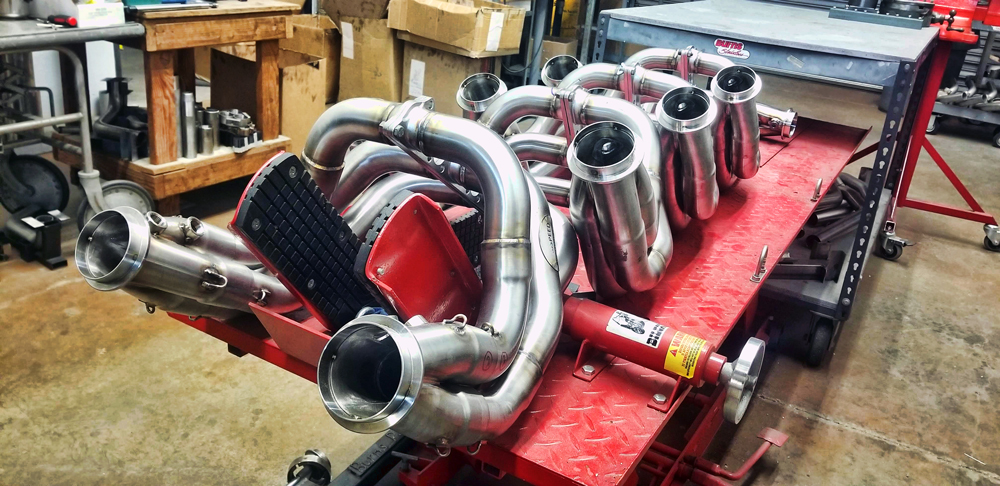
That said, not all suppliers paint a dim picture for aspiring DIY header builders. Some even encourage customers to try it for themselves. “We get brand-new builders every single day and it’s great,” said Zimmerman. “We actually have a whole build series on our YouTube channel. When you break it down in the steps, it’s not a big deal at all for anybody who has a little bit of welding experience and has possibly done some light fab work.”
Material Issues
There are essentially two choices for header material: mild steel and stainless steel. Mild steel was a popular choice for many years, and it’s still appealing to the DIY builders who may not have the necessary skills to work with stainless steel. Nonetheless, fabricators these days increasingly favor stainless steel for header construction. “It switched over about nine, ten years ago,” recalled Jim Renella of Performance Tube Bending, Irwindale, California. “Stainless got very affordable. Everything was mild steel before that.”
“We pretty well don’t stock any mild steel components,” added Roman. “There’s no reason to sell somebody something that will corrode away, when for a few dollars more we can get them something that’s going to last for a long time.”
Further enhancing stainless steel’s appeal for headers is the additional cost of coatings that mild steel requires to prevent corrosion and decay. “As coating costs are increasing, it becomes much more of a break-even point for stainless steel,” explained Zimmerman. “For instance, with a big block Chevy header kit we sell, the cost difference from mild steel to stainless is $275 to $325. When a guy goes to get his headers coated, whether it’s ceramic coating or just high-temp paint, he’s usually looking at about $250 to $300.”
Some builders take sort of a hybrid approach to building custom headers, by forming a rough mockup out of mild steel and then turning it over to a fabricator to build the finished piece out of higher-grade materials. “We have a customer who’s building a Lamborghini Miura from scratch, powered by a Ford Coyote motor,” said Roman. “He built a mockup of his headers in mild steel.”
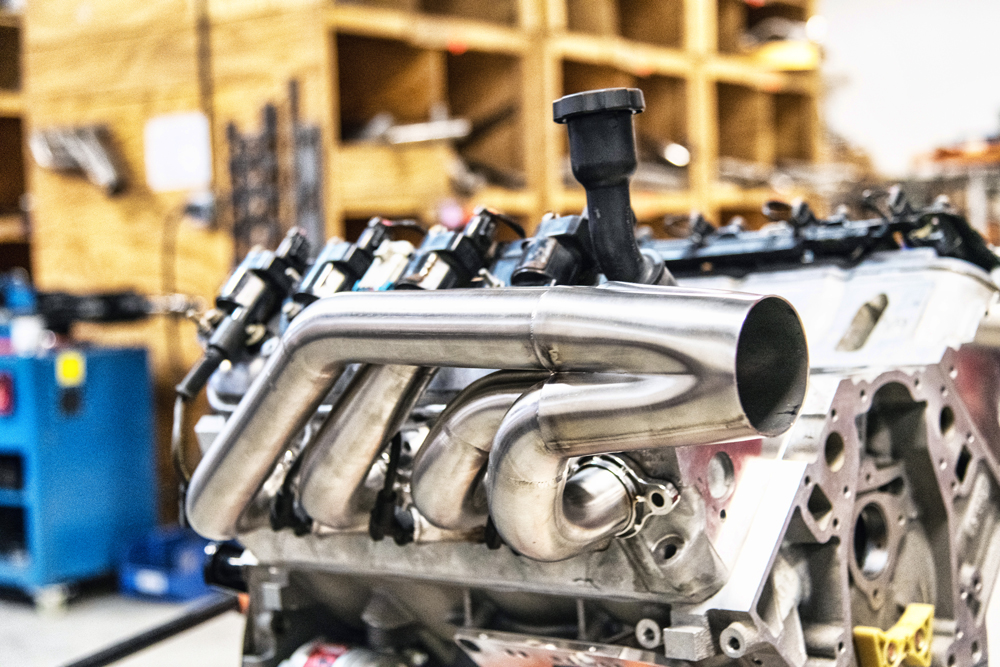
Along with stainless steel, aluminum is being introduced for exhaust components. While it’s unsuitable for the brutal heat of headers, it’s starting to gain popularity for other exhaust system parts.
“In February or March of this year, we very quietly launched a bunch of undercar systems in aluminum,” said Zimmerman. “We’ve had enough of our customer base looking for something more lightweight that’s going to be better for race purposes, and aluminum was our solution. The weight difference is phenomenal. With mufflers it’s more than 40–45% lighter than stainless for the same design. And with tubing, you’re going to be 50–55% lighter with the same thickness on everything.”
The cost of Stainless Headers’ new aluminum components is said to be only about 10–15% more than equivalent stainless components. While the durability isn’t as good as stainless, for the most part it’s proving sturdy enough for weight-conscious competitors looking for an edge without resorting to pricier, more exotic materials. “Our initial concerns were that these mufflers and bends weren’t going to hold up,” said Zimmerman. “But we’ve had really good success stories from some of our earliest customers who’ve been running the same muffler in road racing and track cars for six months now without fail, which is better than expected.
“We’ve even done a couple of merge collectors in aluminum, and bullhorn systems for some of these all-out drag guys,” he added. “There’s some Pro Mod stuff where they really don’t mind replacing it every other weekend. So for us, aluminum is a great middle ground on getting something lightweight without breaking the bank, like swapping over to titanium.”
However, any discussion of materials these days would be incomplete without mentioning the effects of the pandemic. With international supply chains battered by COVID-19-related factors, header component manufacturers are sometimes forced to delay orders, put shipments on hold or offer customers alternatives for the time being.
Nonetheless, some suppliers have been able to cope better than others. “I had an inkling about this a few months ago so I ordered a lot of inventory,” said Renella. “I’m getting a mill run ready for stainless steel tubing, and I’m willing to place a big order with money upfront.”
Completing the Puzzle
Another important consideration for fabricators building custom headers is the question of what specific components to order. A custom header is essentially a jigsaw puzzle without a picture on the box, forcing fabricators to order the correct type and quantity of tubing bends, collectors, flanges and other hardware before they even know exactly what they are going to need.
To help customers get all the right pieces for their project, Burns Stainless offers a Race Engine Spec Form on its website. Users fill out the online form with information about their engine, car, exhaust system and type of racing. From those details, Burns then works up a custom list of components the builder needs to order.
Other suppliers favor a more organic approach to understanding customers’ needs. “I think it’s important to have a conversation with customers,” said Browning. “When someone’s spending their hard-earned money on a performance product that’s their passion, I think that’s worth a 10-minute phone call to find out what they really want and need.”
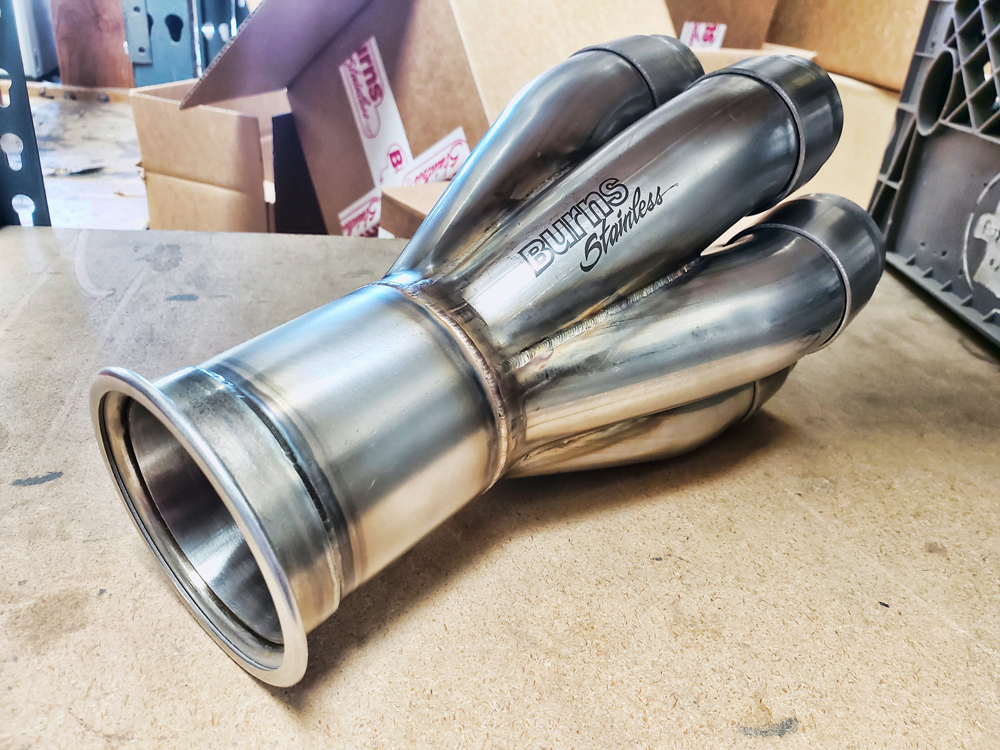
Browning said he asks customers about the kind of engine they’re using, the make and model of vehicle, whether it’s a factory chassis or custom unit, engine placement in the chassis and more. Along with this, he’ll frequently have customers text or email photos of their setup to get an even clearer idea of their needs.
To further aid fabricators in their header-building efforts, some component suppliers offer kits. They typically include flanges, collectors and an assortment of tubing bends. Some kits also add other extras to accommodate a wider range of potential applications. Kits from Stainless Headers, for example, have collector tabs, oxygen-sensor bungs and even a supply of TIG-welding filler rod. “It’s basically missing only the welder,” said Zimmerman.
Some suppliers have developed their own unique hardware, designed to further simplify the build process and allow more options for fabricators. Ultimate Headers offers cast elbows that have very tight bends, which allows headers to sit closer to the engine by making the first bend in the system a smaller radius than is possible with bending.
“Because of that cast elbow, we’re able to engineer and manufacture headers that have big tubes and make them fit in tighter places that aren’t easy to do,” explained Browning. “It flows extremely well. You’re not cutting a tube in the middle of a bend, where you’ve now made it more egg shaped.”
The Back End
Although many race cars don’t need an exhaust system beyond their headers, mufflers and full exhaust systems are increasingly becoming a reality for some, particularly on tracks with aggressive noise regulations. For dual-purpose cars, a full exhaust system is pretty much a given.
As with header building, there are a number of kits available for exhaust system fabrication. These typically include pipes, mufflers, flanges, connectors and clamps, built from aluminized mild steel or stainless steel.
One of the more unique exhaust-system developments is oval exhaust tubing. “Cars are getting more powerful, and they’re getting lower to the ground for aerodynamics,” explained Zimmerman. “They need to have large exhaust tubes, but they don’t have the ground clearance. Our oval exhaust tubing is great for being able to hit the large cross-sectional area and still keep things tucked up tight into a floorboard, or even inside a rocker panel.”
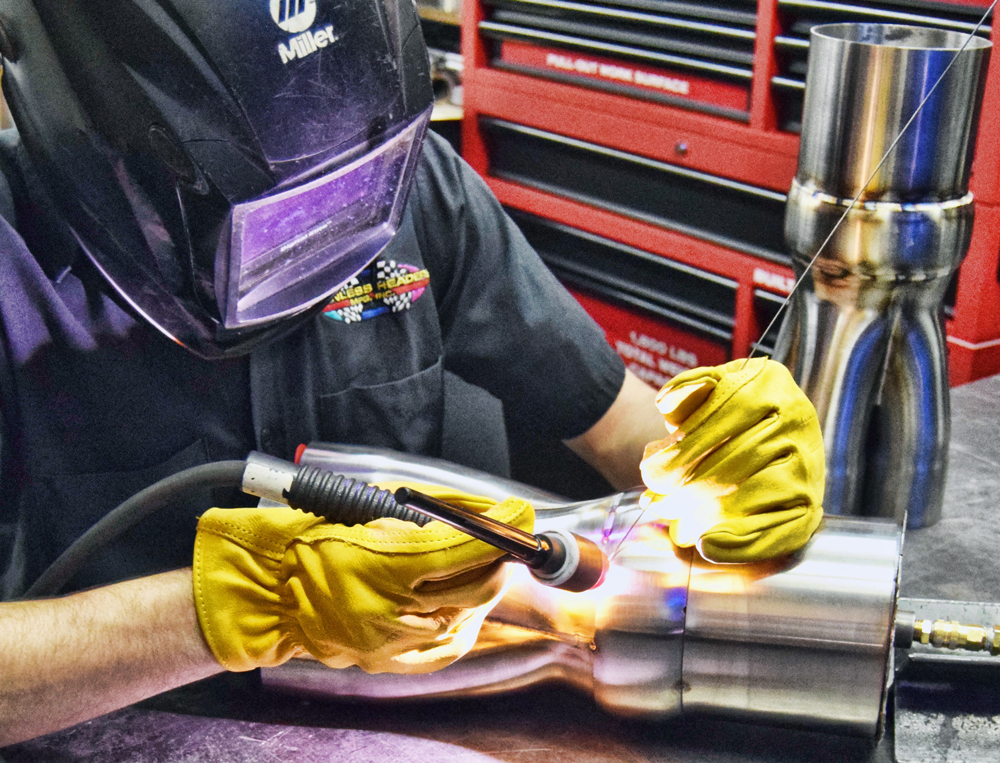
To further enhance ground clearance, the company has also developed a unique, proprietary slip joint for its oval exhaust systems. “With our slip joints, you don’t have to run flanges and eat up some of that ground clearance,” said Zimmerman.
For dual-purpose cars, catalytic converters are still a consideration. That can be a vexing problem for serious competitors who want maximum performance in a street-legal combination.
“To try to meet an emissions standard, the cats on production exhaust systems have gotten closer and closer to the engine,” said Roman. “To get the full benefit of a racing header, you want to have a long-tube header, so that’s usually not compatible. For example, there are aftermarket headers built for C8 Corvettes that incorporate the stock cats in their original places. But other than getting a tube header, you’re not really getting much benefit.”
Whatever combination of car and engine you’re working with, today’s component suppliers offer more options than ever before to make the task of building an exhaust system easier, faster and more effective. Building custom headers is still challenging work that requires considerable skill and patience. But now more than ever, it’s possible to finish the exhaust portion of a race car in a way that looks good and works efficiently, which leads to better power and increased performance.
Building Headers the Ice Way
—
Before Victor Franco of icengineworks in Austin, Texas, came along, designing custom headers was a tedious trial-and-error process. “All the experts would tell me, it’s essentially a Hail Mary,” he said. “You had to waste a lot of material, and it would take months to design a quality system. So, I guess my assertion was, ‘There’s got to be an easier way.’”
Franco developed a system designed to take the pain and guesswork out of header design and allow quicker fabrication once the design is set. His product, the Header Modeling System, breaks the process into three separate stages: Stage I is design and modeling; Stage II is tube cutting; and Stage III is assembly and welding.
Stage I is the core of the system. It’s a set of plastic blocks designed to enable builders to quickly and precisely mock up custom headers. Once users have snapped together their header mockup, markings on the blocks allow them to easily calculate bends and cuts.
“The plastic blocks are like Legos,” explained Franco. “They snap into each other, and they’re a faithful representation of actual bent tubing that’s available. You don’t have to go to a computer, turn it into a virtual design, and then have to come back to the real world. It’s a faithful, one-to-one scale model. For example, if you’re running a tube into a steering column, you’re going to see it.”
The blocks are available in three types: EH for exhaust headers; NP for turbocharger manifolds; and FE for full exhaust/cat back systems, intercooler and turbo downpipe tubing assemblies, and cold air intakes.
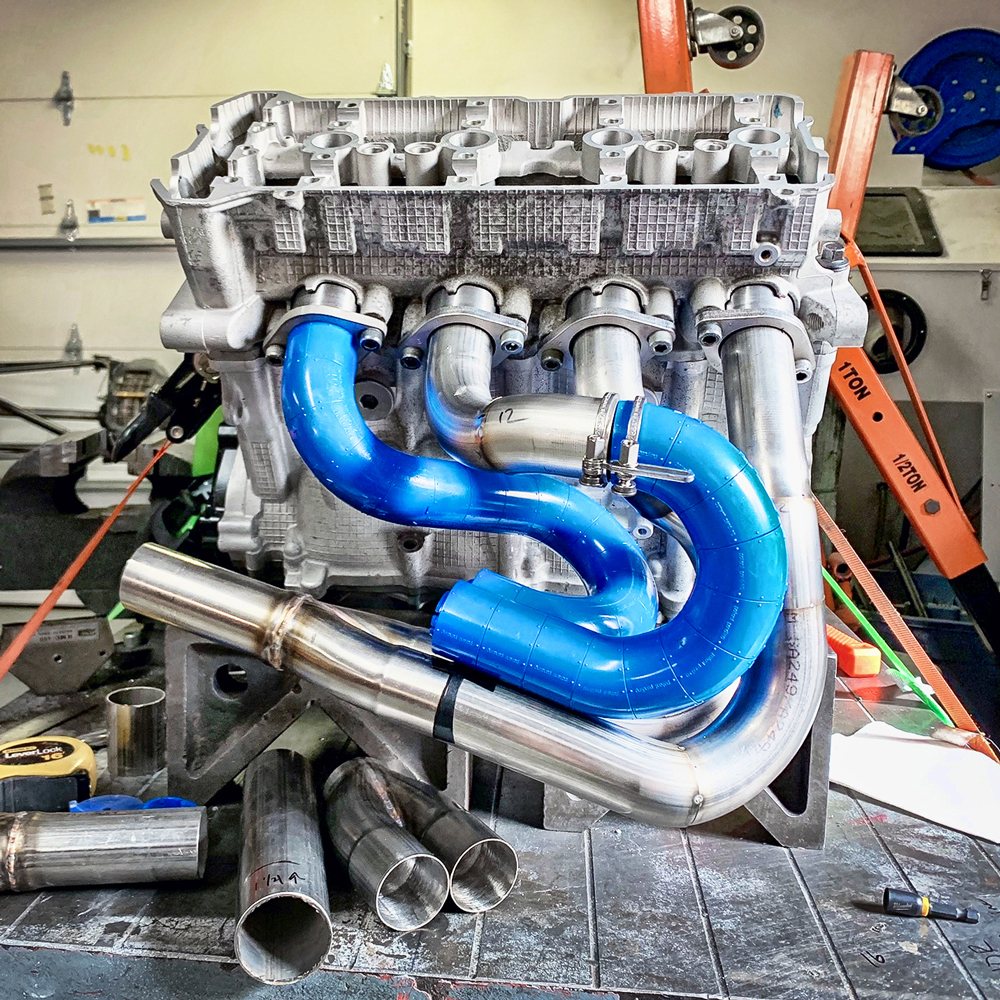
Stage II of the system is a method for cutting tubing precisely. It includes a fixture designed to transfer the measurements and angles quickly and easily from the mockup for faster fabrication.
Stage III is a unique clamp designed to hold tubing in place for tack welding. It aims to eliminate small positioning errors that can add up to big inaccuracies and wasted pieces when compounded over the length of a whole header.
At around $1,000 or more, the Header Modeling System probably wouldn’t be a casual investment for some shops. Franco explained that the cost of building a product like this in relatively small production runs does not allow a lower price point.
Yet the system’s cost justification is compelling, nonetheless. “I had one customer tell me that it brings a 40-hour job down to as little as 10 hours,” said Vince Roman of Burns Stainless, Costa Mesa, California, a retailer of the product.
With welding and fabrication shop rates now typically at least $75 per hour, a 30-hour savings like that would pay back more than double the cost of the Header Modeling System.
Franco has seen the pain of building custom headers the old-fashioned way. Now he’s a man on a mission to speed the process and make it more accessible for people of all skill levels. “There was a guy I met who was very proud of the header designs he did for a Fiero. It took him three months. Well, three months at two hours a day? You’re nuts. Unfortunately, that’s the best he could do.
“I tell people, if that isn’t worth $1,000 forever, then you are in the wrong career, man.” —David Bellm
SOURCES
–
Burns Stainless
burnsstainless.com
DC Sports
dcsports.com
icengineworks
icengineworks.com
Performance Tube Bending
ptbtubebending.com
Specialty Products Design
spdexhaust.com
Stainless Headers Mfg., Inc.
stainlessheaders.com
Ultimate Headers
ultimateheaders.com
Woolf Aircraft Products
woolfaircraft.com
 MEMBERSHIP LOGIN
MEMBERSHIP LOGIN JOIN PRI
JOIN PRI

